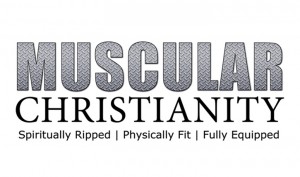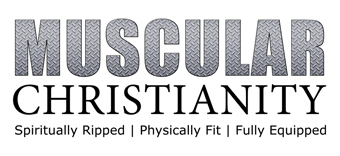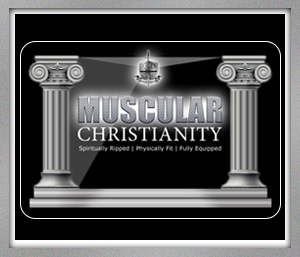Think of the Children
 I’m watching my country burn.
I’m watching my country burn.
I’m seeing whole cities voting to redefine the very definition of law and order.
I’m watching my nation collapse beneath the weight of bankruptcy.
I’m being told that the traditional image of my Savior is a form of White Supremacy.
And what’s bizarre is that we are being told to welcome these changes in the name of compassion and justice.
We need to “think of the children.”
Strategic Packaging
When I say, “think of the children,” I’m referring to the way militant perspectives are being intentionally packaged as platforms that cannot be contested without falling into the trap of being labeled “Racist” or worse.
By using verbiage designed to illicit an emotional response and positioning their argument as something coming from the mindset of a victim, crucial criteria is replaced with passionate appeals and legitimate topics become effective tactics to advance an agenda that is pure evil.
To disagree is to be insensitive to the downtrodden and the innocent…
You need to “think of the children.”
Debating Like Christ
It’s almost impossible to effectively converse with someone who’s cloaked themselves in an argument that’s built more on what one “feels” as opposed to what one “thinks.” Experts will tell you that you have to let your subject lament and rage in the aftermath of a traumatic event before you can expect them to talk and reason. Normally, this is a healthy approach. But it can be an effective tactic in the hands of someone who’s agenda is not recovery or reconciliation as much as it destruction and rebellion.
In that kind of situation, you can’t afford to “answer a fool according to his folly (Prov 26:5).” In other words, you can’t allow the trajectory of the conversation to be dictated according to the traps and snares represented by loaded questions and scripted responses. Instead, you have to be like Christ in the way He responded to the Pharisees who were attempting to trap Him in His own words.
15 Then the Pharisees went out and laid plans to trap him in his words. 16 They sent their disciples to him along with the Herodians. “Teacher,” they said, “we know that you are a man of integrity and that you teach the way of God in accordance with the truth. You aren’t swayed by others, because you pay no attention to who they are. 17 Tell us then, what is your opinion? Is it right to pay the imperial tax[a] to Caesar or not?”
18 But Jesus, knowing their evil intent, said, “You hypocrites, why are you trying to trap me? 19 Show me the coin used for paying the tax.” They brought him a denarius, 20 and he asked them, “Whose image is this? And whose inscription?”
21 “Caesar’s,” they replied.
Then he said to them, “So give back to Caesar what is Caesar’s, and to God what is God’s.”
22 When they heard this, they were amazed. So they left him and went away. (Matt 22:15-22)
Notice how Christ avoided the trap that was being set for Him by responding with a question of His Own. By putting the burden of proof back on the shoulders of the Pharisees, they were compelled to concede their true motives as well as the deficiency in their argument.
It’s a brilliant tactic and one that is absolutely necessary in today’s marketplace of ideas in order to prevent nonsensical and truly wicked falsehoods to appear logical and even noble.
Tear Them Down
Shaun King is an activist that recently made headlines by insisting that all images of Christ need to come down because they are representative of White Supremacy.
He argues that Jesus was not at all like the traditional European rendering of Christ – that it’s yet another tactic being used by White Supremacists to oppress people of color.
The problem with King’s rationale is that he makes no distinction between the image of Christ and the gospel of Christ. Most don’t equate the way in which the apostles or the Messiah are portrayed in stained glass windows as authentic portraits as much as their are icons that remind us of who and what we are in Christ. The resulting conclusion from King’s argument doesn’t translate to a reevaluation of a Symbol as much as it’s the dismissal of a Creed.
However the image of Christ is rendered, it’s a reverence for the Strength and Purity of God that has to be maintained. And not just in a distant, theological manner where scripted verses are interjected into the conversation for the sake of sounding spiritual, but in a practical way where every kind of disease and every kind of injustice is handled and solved in the context of Real Wisdom.
But how do you handle King’s indignation? How do you respond to someone who’s insistent that Christianity is racist, that “white evangelicals” constitute a threat to our democracy and the safety of all non-white demographics?
You have to argue like Christ.
What Does the Bible Really Say?
Just because you’re holding a Bible doesn’t mean you believe it let alone obey it. Between the years of 1915 and 1922, the Second Klu Klux Klan required their membership to be Christian. Furthermore, even if you have some semblance of a relationship with Christ, you’re still more than capable of subscribing to a distortion of God’s Word just like Jerry Falwell in 1958 who preached a sermon criticizing a recent Supreme Court ruling that outlawed public school segregation.
Critics seize upon situations like what’s represented by the Klan and the Moral Majority as proof that the Christian religion is fundamentally racist and therefore cruel. To subscribe to such a creed requires a disdainful lack of compassion and demonstrates something that cannot be logically embraced by a civilized society.
And you can’t expect your argument to be made by simply asking, “What does the Bible say?”
Some critics will be able to point to passages that can be seamlessly taken out of context and used to support a mindset that is outrageously wicked. A great example of how quoting the Bible does not necessarily equate to an accurate application of it can be seen in Matthew 4 when Satan attempted to get Christ to make some concessions in three different ways – one of which was presented as a direct quote from the book of Psalms taken out of context.
The question isn’t, “What does the Bible say?” as much as it’s, “What does the Bible really say?”
At that point, you’re in a position to pose some questions in response to the accusations you’re looking to dismantle. Here are some examples:
| Does the Bible not support slavery? | What was the punishment for kidnapping in the Old Testament? (Ex 21:16) |
| How could Abolitionists base their argument against the slave trade on the Bible if Scripture supported it? | |
| The Bible specifically references making slaves out of foreigners in the book of Exodus. That proves God endorses slavery. | The slavery referred to in the Old Testament was not the kind of dynamic where persons were reduced to the status of a human appliance. It was work that you were assigned to do in order to either pay off a debt (Lev 25:39), repay what you had stolen (Ex 22:3) or as option to the war and judgment reserved for those who enthusiastically rebelled against God and declared war on His people. (Dt 20:10-11) |
| The Klu Klux Klan were Christians | Can you claim to be a Christian without actually behaving like one (Matt 7:21)? |
| Our Founding Fathers were Racists and therefore any government coming from that kind of a depraved mind is going to be fundamentally flawed and needs to be discarded. | Do we evaluate The Declaration of Independence and our Constitution according to the characters flaws of its authors or according to the substance of the documents themselves (2 Tim 3:16-17)? |
Conclusion
We do need to “think of the children.” But not in the way in which those who are holding a literal and figurative match to a tank of philosophical gasoline want that phrase to be processed. Instead, we need to hear it as an admonishment to be prepared like it says it 1 Peter 3:15 – to be ready to explain what you believe and why so that when those who are getting ready to subscribe to a lie, they have in you a Resource that’s talking them down off the ledge and pointing them to a Truth that’s as beneficial as it is Profound. In that way, you’re “thinking of the children” by championing the Truth that guarantees them a healthy future as opposed to humanistic disaster.






You must be logged in to post a comment.